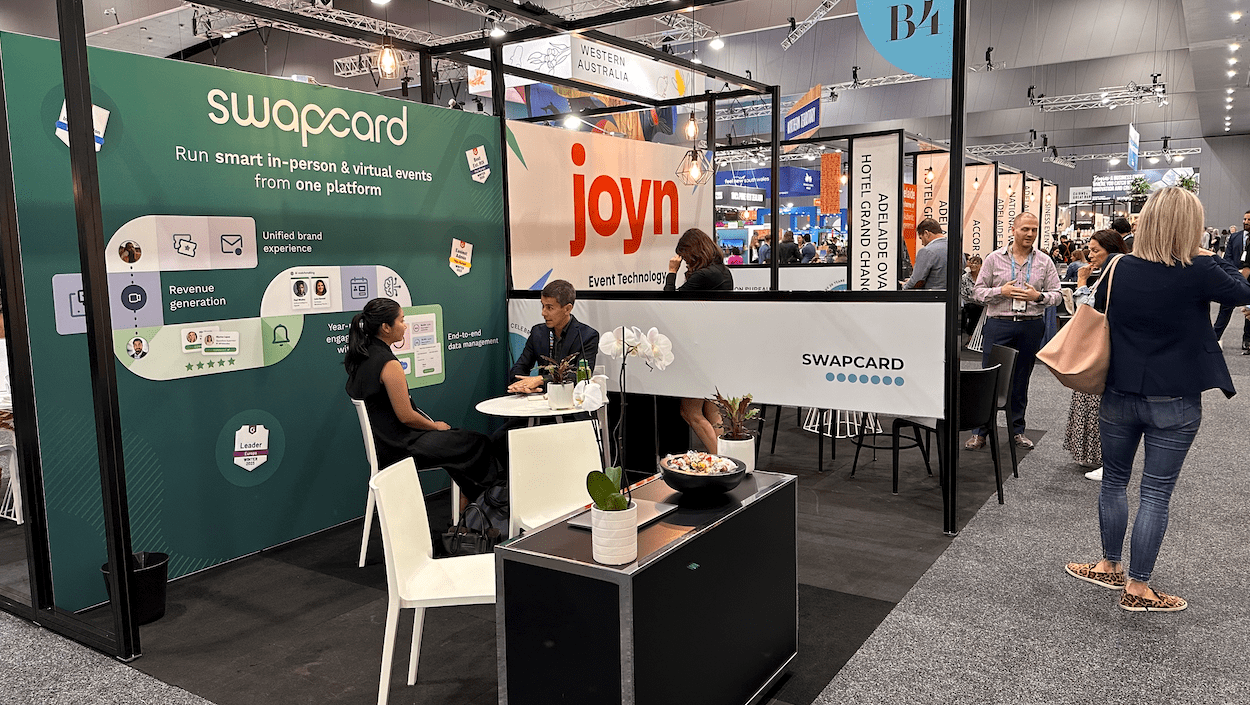When designing a registration form for your association event, it can be challenging to strike the right balance between collecting necessary information and keeping the process user-friendly.
The number of questions and how they are presented can significantly impact the user experience and form completion rates.
This guide will help you optimize your registration design by addressing critical questions about form setup, necessary fields, and features that enhance member engagement and completion rates.
Let’s get started!
How Many (Additional) Questions Should Be on a Registration Form?
.png?width=1520&height=618&name=In-Article%20(73).png)
A common dilemma in registration form design for association events is deciding how many additional questions to include. Additional questions refer to the information requested beyond the basic attendee details, such as name, email, and payment information. These questions aim to gather more specific data that can help tailor the event experience, facilitate better planning, and provide valuable insights for future events.
However, overloading the form with too many questions can lead to higher abandonment rates, as potential attendees might feel overwhelmed or frustrated by the length and complexity of the registration process.
For most, the sweet spot would be between four and seven additional questions.
Here are some popular additional questions to ask during registration:
- Membership Status & ID: Knowing whether the attendee is a member and their ID can help streamline check-in processes and offer member-specific benefits.
- Professional Title: This helps in personalizing session content and networking opportunities.
- Organization/Company: Understanding the attendee's affiliation can aid in creating targeted content and offers.
- Address/Region: Geographic data can be valuable for logistical planning and demographic analysis.
- Primary Area of Interest: This information allows you to tailor event content and sessions to attendee preferences.
- How Did You Hear About the Event? This helps you evaluate the effectiveness of your marketing channels.
- Accommodation Requests: Specific needs or accommodations that attendees might require e.g. mobility assistance or gluten-free meals.
- Terms & Conditions: Clarifies event policies for attendees and provides legal protection for organizers. This could be just a check box.
To select the right questions for your association event:
- Decide on Your Priority Questions: Prioritize information that helps to enhance the attendee experience and better serve its members.
- Segment Questions: Use conditional logic to show specific questions only to relevant attendees, reducing the overall number of questions each person has to answer.
- Use Clear, Concise Language: Ensure that each question is straightforward and easy to understand, minimizing the time and effort required to respond.
- Explain the Purpose: Briefly explain why certain information is being requested, helping attendees see the value in providing detailed responses.
- Offer Auto-Fill Options: Where possible, allow attendees to auto-fill their information, especially if they have registered for past events or are members of the association.
How Should My Form Be Set Up? All on One Page vs. Multiple Pages
Deciding whether to present your registration form on a single page or across multiple pages can significantly impact user experience and form completion rates. Both approaches have their advantages and disadvantages, and the best choice depends on your event's specific needs and your audience’s preferences.
.png?width=1520&height=618&name=In-Article%20(74).png)
Advantages of Single Page Forms
- Streamlined Process: Users can complete the form in one continuous flow without navigating between pages, which can be more convenient.
- Immediate Overview: All required fields are visible at once, allowing users to see what’s needed and gather information beforehand.
- Reduced Navigation: Eliminates the need for users to click through multiple pages, reducing the risk of losing track or abandoning the form.
- Faster Completion: Potentially quicker for users who prefer not to be interrupted by page transitions or additional steps.
- Simpler Design: Easier to design and implement if the form is short and straightforward, with no need for managing multiple pages or complex navigation.
Advantages of Multiple Page Forms
- Manageable Steps: Breaks down the form into smaller, more manageable sections, reducing the feeling of being overwhelmed by a long form.
- Progress Indicators: Provides visual cues on how much of the form has been completed and what remains, which encourages users to finish.
- Contextual Guidance: Allows for more detailed instructions and help on each section, improving the accuracy of the information collected.
- Reduced Cognitive Load: By presenting fewer fields at a time, users can focus on one section at a time, which can lead to better responses and fewer errors.
- Improved User Experience: Can be designed to cater to complex forms, making the process feel more structured and less daunting for users.
What Are the Key Features to Implement in Your Registration Form?
.png?width=1520&height=618&name=In-Article%20(75).png)
To enhance the functionality and user-friendliness of your registration form, consider integrating the following features:
- Auto-Fill and Save (“The One-Click Form”)
Auto-fill can save users time by automatically filling in their details based on previous entries or their profile information. This is especially handy for returning attendees. Adding a save feature also lets users start the form, take a break, and come back to it later without losing their progress. This flexibility can help reduce the number of people who abandon the form midway. - CAPTCHA
CAPTCHA helps keep your form spam-free by ensuring that real people, not bots, are filling it out. It might ask users to identify tricky characters or pick out images from a set. This keeps your data clean and reliable, ensuring that only genuine attendees register. - Pop-Up Ads
Pop-ups can sometimes be annoying, but when used wisely, they can be really helpful. For instance, you can use them to share important updates, remind users about registration deadlines, or offer last-minute discounts. When done right, they can provide valuable info without overwhelming your users. - Social Sharing Widget
Adding a social sharing widget lets users spread the word about your event on their social media profiles. This is a great way to boost your event’s visibility and get more people interested. When attendees share their registration, their friends and connections might decide to join in too.
By including these features, you’ll make your registration form smoother and more engaging, which can lead to higher completion rates and more buzz around your event.
What Are Some Additional Components That Can Help Increase Form Completion?
.png?width=1520&height=618&name=In-Article%20(76).png)
When it comes to form completion, a simple form with great features is a good start, but adding a few extra touches can make a big difference!
Consider incorporating:
- Compelling Copy
Use engaging and straightforward language throughout your form. Instead of dry, technical terms, use friendly, motivating words that make users excited to register. Highlight the perks of completing the form, like exclusive event access or cool bonuses, and reassure users that their information is safe. This can make users more likely to finish up their registration. - Visual Cues like icons, images, and colors
Add some visual flair with icons, images, and colors to make your form easier to navigate. Icons for different sections—like a shopping cart for payment details or a calendar for event dates—can help users quickly find what they need. Plus, a splash of color or a few images can make the form look more inviting. - Clear Call-to-Action Buttons
Make your call-to-action (CTA) buttons pop with eye-catching design and strong, action-oriented text. Buttons like “Register Now,” “Submit Your Info,” or “Confirm Your Spot” should be easy to spot and clearly tell users what to do next. A standout CTA button can guide users smoothly from one step to the next and keep them moving through the form. - Progress Indicators
Show users how far they’ve come with a progress bar or step tracker. Seeing how much they’ve completed and how much is left can make the form feel less overwhelming. Progress indicators help users stay motivated by giving them a clear picture of their progress and encouraging them to finish. - A Personalized Experience
Tailor the form to fit the user’s needs and preferences. For returning users, suggest relevant options based on their past registration responses. For new users, use what you know about their interests to make the form more relevant. Personalizing the experience can make users feel valued and more likely to complete the form.
By adding these elements to your registration form, you’ll make it easier and more enjoyable for users to sign up, which can help boost your completion rates and overall engagement.
Summary
By following these guidelines, you can create a registration form that not only gathers essential information but also provides a seamless and engaging user experience. Remember, the goal is to make the process as easy and efficient as possible while ensuring you capture the data needed to tailor the event experience for your attendees and exhibitors.
.png)


-2.png)
-1.png)






